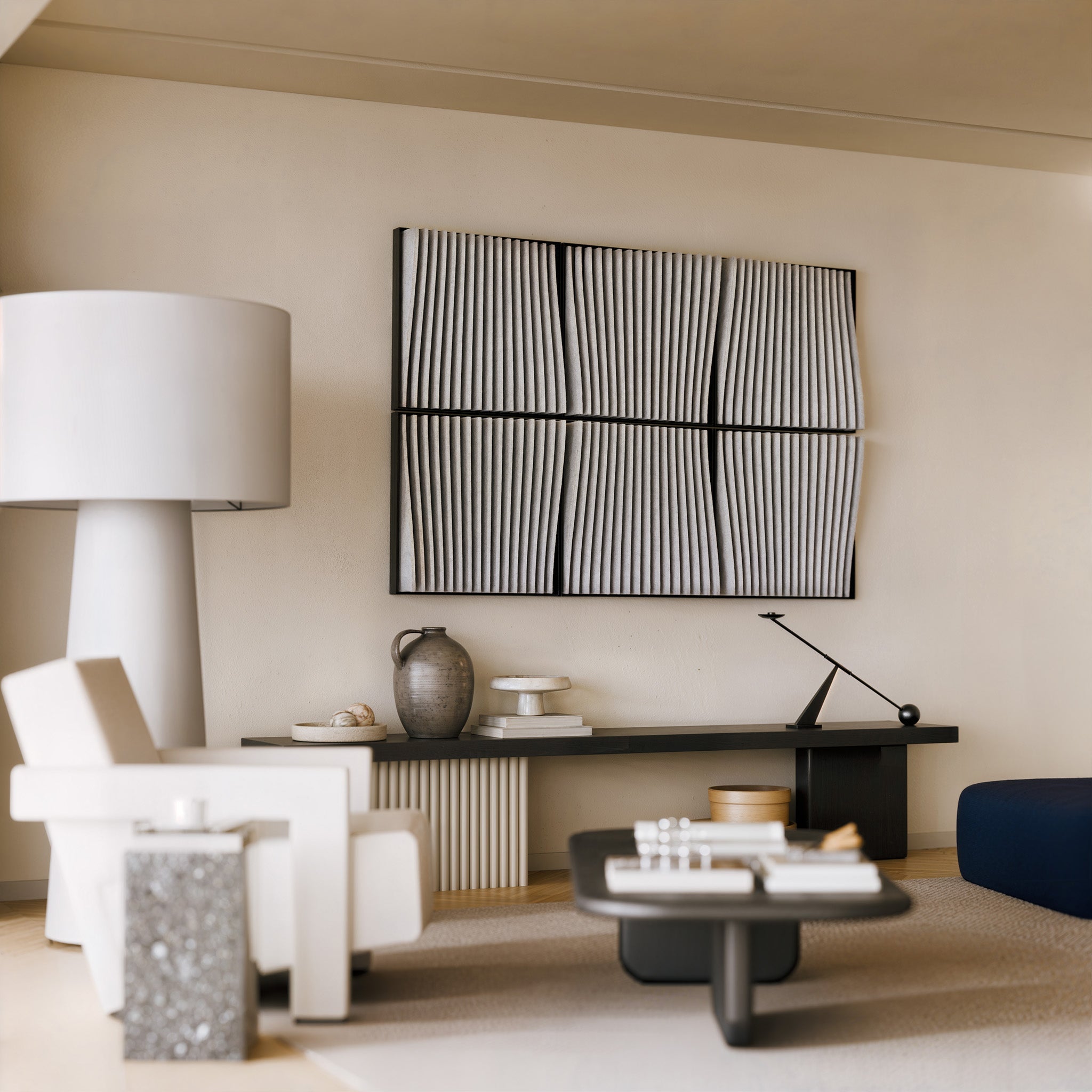Good sound isn’t just heard — it’s felt.
Whether you’re mixing a track, watching a film, or just enjoying a quiet afternoon, the way sound behaves in a room shapes your entire experience. That’s where acoustic panels come in.But not all panels are created equal — and most guides out there still treat them like foam blocks for recording studios. So let’s break it down: what do acoustic panels really do, who are they for, and how do they fit into your space (visually, and sonically)?

What Do Acoustic Panels Do?
Acoustic panels are designed to absorb sound — but not just any sound, and not in a generic way.
What matters is where, how, and what frequencies they absorb. When placed properly, panels help reduce echo, tame reverb, and bring out the true tone of your room — without killing its vibe.
We focus on three key effects:
-
Sound clarity — cutting muddiness in the midrange and highs
-
Bass control — absorbing low-end boom without over-damping
-
Spatial feel — making your room sound more natural, not dead

above is a gif of waterfall chart in our own test space, with 1/4 of the wall covered in our surge pro acoustic panels - before and after. we measured the reverberation time (RT60) before and after installing our panels.
- Before treatment: ~390 milliseconds
- After treatment: ~180 milliseconds
That means the sound of a hand clap or voice echo drops by more than half, turning a room from sharp and chaotic into something warm, controlled, and calm.
Why Looks Matter Too
For years, acoustic treatment was a trade-off: you could get good sound, but only by sacrificing your walls to beige foam or black rectangles.
Massform was built to change that.
We treat panels as functional artwork — sculptural forms that tune a room while elevating it. Whether you're recording, relaxing, or hosting, your walls should feel like part of the experience — not something to hide.
Where You’ll Notice the Difference
Panels can make a huge difference in:
- Music studios & creative workspaces — tighter recordings, clearer mixes
- Living rooms & home theaters — better dialogue clarity, less echo
- Offices & video call zones — improved speech and focus
- Bedrooms & quiet corners — softer ambiance, calmer energy
So… What Makes a Good Panel?

If you’re shopping around, here’s what to look for:
- True acoustic material — not just foam or decoration
- Full-frequency absorption — especially bass (most panels don’t)
- Design-forward — because you live with it, not just listen to it
- Modularity — so it fits your space, not the other way around
Acoustic panels shouldn’t feel like a compromise.
They should feel like something you’re proud to have on your wall — something that transforms your space in both sound and style.



Share:
Start Smart: Where Acoustic Treatment Matters Most
When Labs Say No: Why We Had to Rethink Acoustic Testing